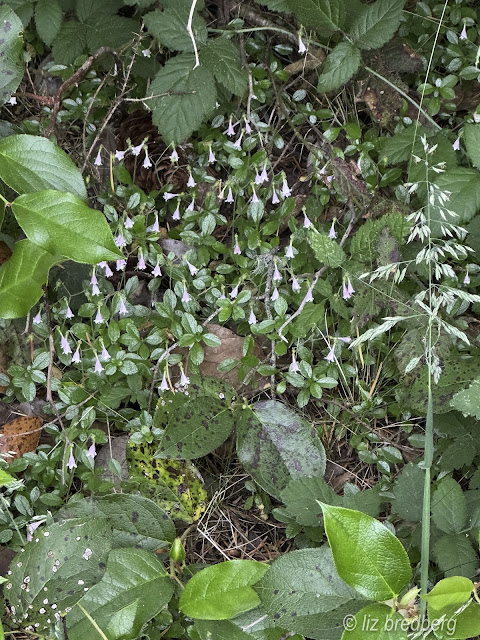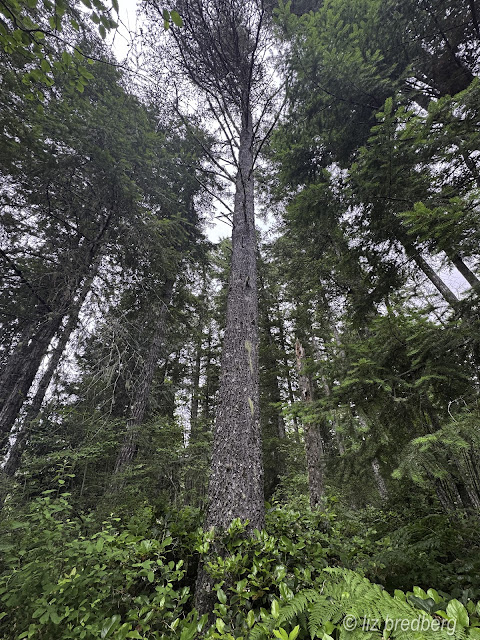21 June
Although the weather persists as cool and cloudy, the Forest and Wetlands display summer abundant summer growth. After too long a time away, we returned to explore the loop to the south of the forest. We expected that the paths would be drier and easier. We weren't disappointed.
Apparently the Forest Gnomes have been very active, maintaining trails and laying down boardwalks.
Step mosses are flourishing and producing abundant sporophytes.
Red huckleberries are ripening.
We watched a red-breasted sapsucker who appeared to be focusing on the hemlocks on the loop trail He spent a lot of time dodging behind the trees, but cooperated briefly.
Sapsuckers have worked over the hemlock for years.
In addition to the typical small holes, they have excavated nest cavities, which in turn look as though they have hosted slime molds.There was also a very active pair of hairy woodpeckers but they were consistently out of range.
The Forest is rich in biodiversity. Trees display an apparent abundance of mosses and fung.
The poison hemlock (not the conifer, but the last of Socrates' beverages) is coming into bloom in the marsh.
joined by a female, keeping a low profile above the buckbean.
A mysteriour creature put in an appearance at the end of the dock--not easily photographed or identified. (Identification suggestions most welcome.)
It's about three inches (maybe a bit more) longer, looks to be flat-sided. Swims freely, and it's possible that the front end is blunt. It appeared last year as well, although we didn't get a photo.
Leaving the Marsh, we found the Jack pine that Gary Murdoch had identified on the recent ANats walk.
It's an unusual tree for these parts, but good to have had its whereabouts pointed out to us--undoubtedly one of the advantages of visits from knowledgeable folks.
Now we can watch the summer advance, as the snow leaves Mount Arrowsmith. We'll hope the the Marsh can retain a water level until next season's rainfall.


















Comments
Post a Comment